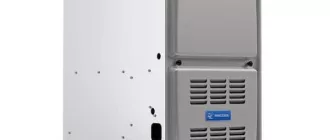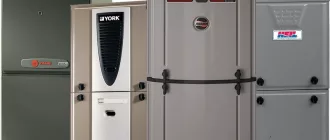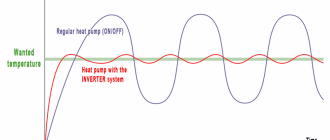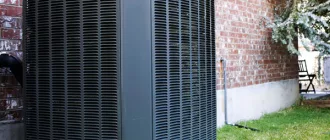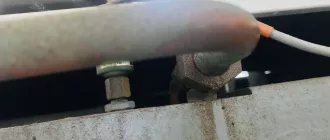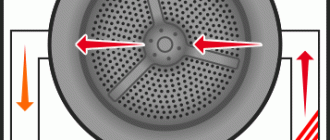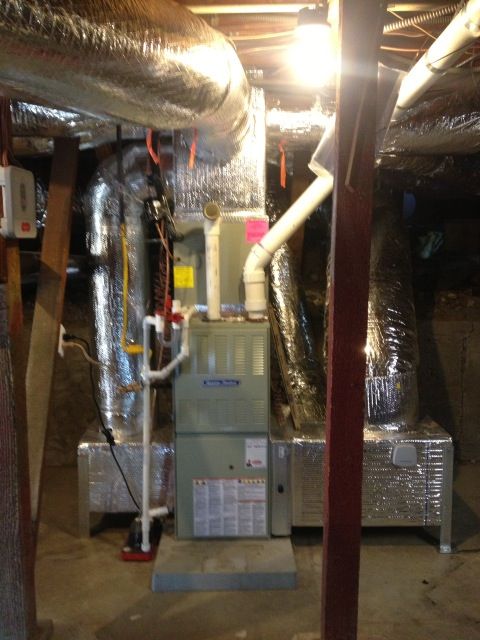
9 Reasons Your Furnace is Losing Efficiency
A properly functioning furnace is essential for efficient heating in your home. However, there are several reasons why your furnace may be losing efficiency, resulting in higher energy bills and a less comfortable living environment. By understanding the potential causes and implementing the appropriate solutions, you can optimize your furnace’s performance and save on heating costs.
1. Lack of Maintenance: One of the primary reasons for a furnace losing efficiency is a lack of regular maintenance. Over time, dust and debris can accumulate in the system, hindering airflow and forcing the furnace to work harder to heat your home. Regular cleaning and inspection can help prevent this issue.
2. Clogged Air Filters: Another common cause of reduced furnace efficiency is clogged air filters. When air filters become dirty and clogged, they restrict airflow, causing the furnace to strain and consume more energy. Regularly replacing or cleaning your air filters can help maintain airflow and maximize efficiency.
3. Aging Equipment: As furnaces age, their efficiency naturally decreases. Older systems may have worn-out components that are less effective at heating your home. If your furnace is over 15 years old, it may be time to consider upgrading to a more energy-efficient model.
4. Thermostat Issues: Incorrect thermostat settings or a malfunctioning thermostat can also lead to decreased furnace efficiency. Make sure your thermostat is properly calibrated and consider upgrading to a programmable thermostat to optimize temperature control and energy usage.
5. Ductwork Problems: Leaky or poorly insulated ductwork can cause heat loss and reduced airflow, resulting in lower furnace efficiency. Inspecting and sealing your ductwork can improve overall system performance and prevent energy waste.
6. Improper Sizing: If your furnace is too small for the square footage of your home, it will struggle to adequately heat the space, leading to reduced efficiency. Likewise, an oversized furnace will cycle on and off frequently, wasting energy. Ensuring your furnace is properly sized for your home’s heating needs is essential for efficiency.
7. Ignition or Sensor Problems: Faulty ignition or sensor components can cause your furnace to work harder or shut down unexpectedly, resulting in reduced efficiency. Regular maintenance and timely repairs can prevent these issues and keep your furnace running smoothly.
8. Blocked Vents or Registers: Blocked or closed vents and registers can disrupt the airflow in your home, causing your furnace to work harder to maintain the desired temperature. Ensure all vents and registers are open and unobstructed to optimize airflow and efficiency.
9. Lack of Air Duct Cleaning: Over time, dust and debris can accumulate inside your air ducts, further hindering airflow and reducing furnace efficiency. Professional air duct cleaning can improve airflow and enhance heating system performance.
In conclusion, there are several reasons why your furnace may be losing efficiency. Regular maintenance, replacing air filters, upgrading outdated equipment, addressing thermostat issues, inspecting and sealing ductwork, ensuring proper sizing, addressing ignition or sensor problems, unblocking vents, and getting professional air duct cleaning can all help optimize furnace efficiency and reduce energy consumption.
Dirty Air Filters
One of the main reasons why a furnace may be losing efficiency is due to dirty air filters. Air filters play a crucial role in the proper functioning of a furnace by trapping dust, dirt, and other particles in the air. Over time, these filters can become clogged and dirty, which restricts the airflow and decreases the overall efficiency of the system.
When air filters are dirty, the furnace has to work harder to push air through the clogged filter. This increases the energy consumption and reduces the effectiveness of the furnace in heating the home. Additionally, the decreased airflow can also lead to uneven heating and cooling throughout the house, resulting in uncomfortable temperatures and higher energy bills.
To prevent these issues and maintain the efficiency of your furnace, it is important to regularly clean or replace dirty air filters. Check your filters at least once a month and clean or replace them as needed. This simple maintenance step can significantly improve the airflow and overall performance of your furnace, helping it to operate at its maximum efficiency.
Summary:
Dirty air filters restrict airflow, decreasing the efficiency of the furnace. Regular maintenance such as cleaning or replacing these filters can help maintain proper airflow and improve the overall efficiency of the system.
Lack of Routine Maintenance
One of the reasons why your furnace may be losing efficiency is due to a lack of routine maintenance. Heating systems require regular upkeep to function at their best. Over time, dust and debris can accumulate in the furnace and cause airflow blockages. This restriction in airflow can make your furnace work harder to heat your home, resulting in decreased energy efficiency.
To address this issue, it’s important to schedule routine maintenance for your furnace. A professional HVAC technician can inspect and clean your system, ensuring that it operates efficiently. During this maintenance visit, the technician will clean or replace the air filters, remove any obstructions from the ductwork, and inspect the overall condition of the furnace.
In addition to professional maintenance, there are a few simple tasks you can do yourself to help maintain your furnace’s efficiency. Regularly change the air filters according to the manufacturer’s recommendations, typically every three months. This will ensure proper airflow and prevent debris from clogging the system. Additionally, keep the area around the furnace clean and free of clutter to prevent obstructions from impeding airflow.
By investing in routine maintenance for your furnace, you can prevent a loss of efficiency and ensure that your heating system operates at its best. Regular upkeep not only improves energy efficiency but also extends the lifespan of your furnace, saving you money in the long run.
Malfunctioning Thermostat
A malfunctioning thermostat can be one of the reasons why your furnace is losing efficiency. The thermostat is responsible for regulating the temperature in your home and telling the furnace when to turn on and off. If the thermostat is not functioning properly, it can cause the furnace to run longer than necessary or not turn on at all, leading to wasted energy and reduced heating efficiency.
There are several reasons why a thermostat may malfunction. It could be due to a faulty wiring connection, a dead battery, or a problem with the temperature sensor. Additionally, dust and debris can accumulate inside the thermostat, affecting its performance. Regular maintenance and cleaning can help prevent these issues.
To troubleshoot a malfunctioning thermostat, you can start by checking the wiring connections and replacing the battery if necessary. If the thermostat still doesn’t work properly, you may need to call a professional technician to diagnose and repair the problem.
Another potential cause of a malfunctioning thermostat is incorrect calibration. If the thermostat is not calibrated correctly, it may not accurately measure the temperature in your home, leading to inefficient heating. You can check the thermostat’s calibration by comparing it to a reliable thermometer placed nearby.
In addition to troubleshooting the thermostat, it is important to ensure that your home has proper insulation. Poor insulation can lead to heat loss, causing your furnace to work harder and less efficiently. Make sure that windows and doors are properly sealed and that there are no gaps or cracks where heat can escape. Insulating the attic and walls can also help improve heating efficiency.
This concludes our discussion on the potential issues related to a malfunctioning thermostat. By addressing this problem and maintaining your heating system, you can ensure that your furnace operates at optimal efficiency and provides the desired level of comfort in your home.
| Related Article | 9 Reasons Your Furnace is Losing Efficiency: Troubleshooting and Solutions |
| Author | Your Name |
| Date Published | October 15, 2022 |
Leaky Ductwork
One of the reasons why your furnace may be losing efficiency is due to leaky ductwork. Leaky ducts can result in the loss of heated air, leading to decreased heating performance and increased energy consumption.
Leaky ductwork can be caused by various factors, such as poor installation, age, or damage. Insufficient insulation around the ducts can also contribute to air leakage. When air escapes from the ducts, it can lead to airflow problems, as the warmed air is not effectively distributed throughout your home.
To identify if you have leaky ductwork, you can perform a visual inspection of your ducts. Look for any visible signs of damage, such as loose or disconnected joints, holes, or tears. Additionally, you may notice uneven heating or cooling in different areas of your home.
To fix leaky ductwork, it is recommended to hire a professional HVAC technician. They can properly seal and insulate your ducts to prevent air leakage. HVAC technicians have the expertise and tools necessary to identify and repair any issues with your ductwork.
Regular maintenance of your heating system is crucial to preventing and addressing leaky ductwork. Routine inspections by a professional can help identify any potential issues before they worsen. Additionally, changing your furnace filters regularly can improve system airflow and reduce strain on your furnace.
In conclusion, leaky ductwork can contribute to a decrease in your furnace’s efficiency. It is important to address and repair any issues with your ductwork to optimize heating performance and reduce energy consumption.
Clogged Burners
One common reason for a furnace losing efficiency is clogged burners.
Over time, the burners in your furnace can become clogged with dirt, debris, and other particles.
When this happens, it affects the efficiency of the heating system and can lead to a decrease in airflow and an increase in energy consumption.
Clogged burners can result in insufficient heat output and cause the furnace to work harder to maintain the desired temperature.
This can not only lead to discomfort but also increase your energy bills.
To address this issue, regular furnace maintenance is essential.
It is recommended to have your furnace inspected and cleaned by a professional technician at least once a year.
During the maintenance, the technician will clean the burners, removing any dirt or debris that may be causing the clogs.
They will also check for any damage or signs of wear and tear, ensuring the burners are in good working condition.
In addition to professional maintenance, you can also check the burners yourself.
If you notice any visible clogs or blockages, you can carefully remove them using a soft brush or cloth.
However, it is important to turn off the furnace before attempting any cleaning.
Regular maintenance and cleaning of the burners will help to improve the efficiency of your furnace and ensure optimal heating performance.
This will not only save you money on energy bills but also prolong the lifespan of your heating system.
Ignition Problems
If your furnace is losing efficiency, ignition problems could be one of the reasons behind it. The ignition system in your furnace is responsible for starting the heating process. If the ignition system is faulty or not working properly, it can lead to various issues that can affect the efficiency of your furnace.
One of the common problems with the ignition system is a dirty or worn-out ignition sensor. This sensor is responsible for detecting the flame and allowing the furnace to continue heating. If the sensor is dirty or worn-out, it may not be able to detect the flame properly, causing the furnace to turn off prematurely or not turn on at all.
Another possible cause of ignition problems is a faulty ignition control module. This module controls the timing of the ignition process and ensures that it happens at the right moment. If the control module is faulty, it may not be able to send the signal to ignite the furnace, resulting in a loss of heating efficiency.
Additionally, poor insulation around the ignition system can also contribute to ignition problems. Insufficient or degraded insulation can cause heat loss, making it difficult for the ignition system to maintain the required temperature for the heating process. This can result in increased energy consumption and reduced heating efficiency.
It is important to address ignition problems promptly to prevent further damage to your furnace and avoid losing efficiency. Consulting a professional HVAC technician is recommended to diagnose and resolve any ignition issues effectively.
Faulty Pilot Light
A faulty pilot light can be a common reason for a furnace losing efficiency. The pilot light is responsible for igniting the burners that produce the heat in your heating system. If the pilot light is not working properly, it can cause your furnace to run inefficiently or not at all.
There are several potential issues that can contribute to a faulty pilot light. One possible problem is a dirty pilot light orifice, which can prevent the pilot light from staying lit. This can be caused by dust, dirt, or other debris clogging the orifice. Regular maintenance and cleaning can help prevent this issue.
Another potential cause of a faulty pilot light is a worn-out thermocouple. The thermocouple is a safety device that detects the presence of a flame and keeps the gas valve open. If the thermocouple is faulty or worn out, it may not detect the flame and shut off the gas valve, causing the pilot light to go out. Replacing the thermocouple can solve this issue.
A weak or low gas supply can also cause the pilot light to malfunction. If there is not enough gas reaching the pilot light, it may not ignite or stay lit. Checking the gas supply and ensuring that it is at the correct pressure can help resolve this problem.
Additionally, a faulty pilot light may be caused by a problem with the furnace’s ignition system. If the ignition system is not working properly, it may not be able to ignite the pilot light consistently or at all. Checking the ignition system and making any necessary repairs or replacements can help fix this issue.
It’s important to address a faulty pilot light promptly, as it can lead to further problems and reduce the efficiency of your furnace. Regular maintenance and inspections can help identify and resolve pilot light issues before they become major problems.
By addressing a faulty pilot light and ensuring that it is in good working condition, you can help maintain the efficiency and performance of your heating system. This will not only help keep your home warm and comfortable but also save you money on energy bills in the long run.
In conclusion, a faulty pilot light can contribute to a furnace losing efficiency. Regular maintenance, cleaning, and inspections are key to preventing and addressing pilot light issues. By taking care of your furnace and addressing any problems, you can ensure that your heating system operates at its best and provides optimal warmth and comfort for your home.
Inadequate Insulation
Inadequate insulation is one of the common reasons why your furnace may be losing efficiency. Insulation plays a critical role in maintaining the heat inside your home and preventing it from escaping. Without proper insulation, the heating system will have to work harder to maintain the desired temperature, resulting in increased energy consumption and higher heating bills.
Insufficient insulation can lead to heat loss through the walls, roof, floors, and windows. This loss of heat creates a temperature difference between the inside and outside of your home, causing the furnace to continually run to compensate for the loss. As a result, the system may experience increased wear and tear and require more frequent maintenance.
To address inadequate insulation, it is important to assess the current state of insulation in your home. Check for any gaps or leaks in windows, doors, and walls that may be allowing drafts of cold air to enter your living space. Inspect the insulation in your attic, basement, and crawl spaces to ensure it is properly installed and not damaged.
If you find any deficiencies, it is recommended to update or add insulation to improve the energy efficiency of your home. This can be done through various methods such as adding weatherstripping to doors and windows, sealing gaps and cracks, and installing insulation materials in walls and attics. It is advisable to consult with a professional to determine the best insulation options for your specific needs.
By addressing inadequate insulation, you can ensure that your heating system operates at its optimal efficiency, reducing energy consumption and saving you money on heating bills. Additionally, proper insulation can enhance the overall comfort of your home by maintaining a consistent temperature and improving airflow.
In conclusion, inadequate insulation can significantly impact the efficiency of your furnace and increase your energy costs. Regular maintenance and inspection of your insulation can help identify and address any issues, ultimately improving the performance and lifespan of your heating system.
Age of the Furnace
The age of your furnace can greatly impact its efficiency. As a furnace system ages, it can start losing its ability to efficiently heat your home. This is because over time, the components of the furnace can wear down, become less effective, and require more energy to produce the same level of heat.
Regular maintenance is crucial to keep your furnace running efficiently and extend its lifespan. However, even with proper maintenance, furnaces have a limited lifespan. The average lifespan of a furnace is typically around 15 to 20 years.
As the furnace ages, its insulation may deteriorate, resulting in heat loss and decreased efficiency. The insulation helps to prevent heat from escaping the furnace, ensuring that it is used to heat your home instead of being wasted. If the insulation is compromised, the furnace will have to work harder to maintain the desired temperature, leading to increased energy consumption.
Another reason why an older furnace may be losing efficiency is due to airflow problems. Over time, dust and debris can accumulate in the furnace’s components and ductwork, limiting the airflow. Restricted airflow can cause the furnace to work harder to circulate air, leading to decreased efficiency and potentially causing damage to the system.
If you have an older furnace that is losing efficiency, it may be time to consider upgrading to a newer, more efficient model. Newer furnaces are designed to be more energy-efficient and can provide better heating performance while reducing your energy costs.
In conclusion, the age of your furnace can have a significant impact on its efficiency. Regular maintenance and proper insulation are essential factors in preserving the efficiency of your furnace and extending its lifespan. However, as a furnace ages, it may lose its ability to heat your home efficiently. If you notice a decline in its performance, consider upgrading to a newer, more efficient model.
Incorrectly Sized Furnace
One of the common reasons for a heating system losing efficiency is an incorrectly sized furnace. If your furnace is too big or too small for your home, it can lead to various issues that affect the overall performance and efficiency of the system.
If the furnace is oversized for your space, it will cycle on and off frequently, wasting energy and putting unnecessary strain on the system. This can lead to higher energy bills and increased wear and tear on the furnace components.
On the other hand, if the furnace is undersized, it will struggle to heat your home adequately. It may run continuously, resulting in increased energy consumption and reduced comfort levels. The system may also wear out more quickly due to constant operation.
To ensure optimum efficiency, it is essential to have a properly sized furnace that matches the heating requirements of your home. A professional HVAC technician can perform a load calculation to determine the right furnace size based on factors such as the square footage of your home, insulation, and airflow needs.
If you suspect that your furnace is incorrectly sized, it is crucial to get it checked by a qualified technician. They can assess your heating system and recommend the appropriate steps to take, whether that involves replacing the furnace with a properly sized model or making adjustments to the existing system.
Remember, investing in proper sizing and regular maintenance is key to ensuring the efficiency and longevity of your furnace, as well as keeping your home comfortable during the colder months.
Blocked Vents or Registers
One of the main reasons why your furnace may be losing efficiency is due to blocked vents or registers. When these vents or registers become blocked, they restrict the airflow from your furnace, which can lead to poor heating performance and reduced energy efficiency.
Blocked vents or registers can occur due to a number of reasons. One common cause is the accumulation of dust, dirt, or debris in the vents or registers. This can happen over time, especially if you do not regularly clean or maintain your heating system. Additionally, furniture or other objects placed in front of the vents can also block the airflow.
To improve the airflow and restore the efficiency of your furnace, it is important to regularly clean and clear the vents or registers. Use a vacuum or a brush to remove any dust or debris that may be blocking the airflow. Make sure to also check that no furniture or objects are obstructing the vents.
Proper insulation is also crucial for maintaining efficient airflow. Insulate your home well to prevent air leaks and ensure that the heated air from your furnace is not escaping. Insulation helps to keep the warm air inside and reduce the workload on your furnace, resulting in improved efficiency and lower energy costs.
Regular maintenance is key in preventing and resolving issues with blocked vents or registers. It is recommended to schedule annual furnace maintenance with a professional technician to ensure that everything is running smoothly. During this maintenance, the technician will clean the vents and registers, check for any obstructions, and address any other potential problems that may be affecting the efficiency of your furnace.
By addressing and resolving issues related to blocked vents or registers, you can improve the airflow and heating performance of your furnace, resulting in better efficiency and energy savings.
Poor Airflow
Poor airflow is one of the main reasons why a furnace may be losing efficiency. When the airflow in your heating system is restricted, the furnace has to work harder to achieve the desired temperature, resulting in decreased efficiency.
There are several reasons why your furnace may be experiencing poor airflow. One of the most common reasons is lack of regular maintenance. Over time, dust and debris can build up in your furnace, clogging the air filter and blocking the airflow. Regular maintenance, such as changing the air filter and cleaning the furnace, can help prevent this issue and ensure proper airflow.
Another reason for poor airflow is improper insulation. If your heating system is not properly insulated, it can lead to air leaks and loss of heat. This can disrupt the airflow and make your furnace work harder to heat your home. Adding insulation or repairing any existing insulation issues can help improve airflow and increase the efficiency of your furnace.
In some cases, the ductwork in your home may be poorly designed or damaged, leading to restricted airflow. Leaky ducts or ducts that are too small can impede the flow of air and cause your furnace to work harder. Having a professional inspect and repair your ductwork can help resolve airflow issues and improve efficiency.
In addition, a dirty or malfunctioning blower motor can also contribute to poor airflow. The blower motor is responsible for circulating the air throughout your heating system. If it is clogged with dirt or not functioning properly, it can result in restricted airflow. Regular cleaning and maintenance of the blower motor can help prevent this issue and ensure proper airflow.
In conclusion, poor airflow is a common reason why a furnace may be losing efficiency. Regular maintenance, proper insulation, and addressing any issues with the ductwork or blower motor can help improve airflow and increase the efficiency of your heating system.
Thermostat Placement Issues
Proper thermostat placement is crucial for maintaining the efficiency of your heating system. If the thermostat is not in an optimal location, it can lead to airflow problems and cause your furnace to lose efficiency.
One common issue is having the thermostat placed near a heat source, such as a fireplace or direct sunlight. When the thermostat is exposed to excessive heat, it may inaccurately detect the temperature in your home, causing the furnace to overheat or shut off prematurely. To avoid this, make sure your thermostat is placed away from any heat sources.
Another issue is having the thermostat placed in a drafty area or near a window. Cold drafts can make the thermostat think that the room is cooler than it actually is, causing the furnace to work harder and consume more energy. Additionally, if the thermostat is exposed to direct sunlight or cold air from a window, it may give false readings, leading to inefficient heating.
Insufficient insulation around the thermostat can also affect its accuracy and efficiency. If the thermostat is located in a poorly insulated area, it may be exposed to outside temperature fluctuations, resulting in incorrect temperature readings and inefficient heating. Make sure the thermostat is installed in a well-insulated location to ensure accurate readings.
In some cases, the thermostat may be placed in a room that is rarely used or far away from the main living areas. This can result in the furnace running unnecessarily and wasting energy. Consider relocating the thermostat to a more central location to efficiently heat your home.
Regular maintenance of your thermostat is also important for optimal efficiency. Dust and debris can accumulate inside the thermostat, affecting its performance. Make sure to clean the thermostat regularly and replace the batteries as needed.
| Placing the thermostat near a heat source |
| Placing the thermostat in a drafty area or near a window |
| Insufficient insulation around the thermostat |
| Placing the thermostat in an unused or remote room |
| Lack of maintenance for the thermostat |
Electrical Problems
Maintenance is crucial for the proper functioning of your furnace system. Electrical problems can significantly impact the efficiency of your heating system. Poor electrical connections, faulty wiring, or malfunctioning circuit breakers can all contribute to an inefficient furnace.
If your furnace is losing efficiency, it’s essential to check for any electrical issues. Make sure all electrical connections are tight and secure, as loose connections can create resistance and hinder the flow of electricity. Additionally, inspect the wiring for any signs of damage or wear. Faulty or damaged wiring can cause power fluctuations, leading to a decrease in efficiency.
Another common electrical problem that can affect furnace efficiency is an overloaded circuit. If your furnace shares a circuit with other high-energy appliances or devices, the system may not receive sufficient power, causing it to work harder and less efficiently. Consider separating your furnace onto its own circuit to prevent overload and improve its performance.
Insulation is also crucial for maintaining the efficiency of your furnace system. If the insulation around electrical components, such as the thermostat or electrical panels, is deteriorating or damaged, it can lead to heat loss and decreased efficiency. Inspect the insulation regularly and replace it if needed to ensure optimal performance.
Regular maintenance and inspection of your furnace system, including its electrical components, is essential for maximizing efficiency. If you suspect any electrical issues, contact a professional technician to diagnose and resolve the problem.
Fuel Supply Issues
One of the main reasons why a heating system can lose efficiency is due to fuel supply issues. If the furnace is not getting enough fuel, it won’t be able to produce enough heat to keep your home warm. This can lead to a decrease in the furnace’s efficiency and an increase in energy costs.
There are a few common fuel supply issues that can cause a furnace to lose efficiency:
- Dirty or clogged fuel filters: Over time, fuel filters can become dirty or clogged with debris, preventing fuel from reaching the furnace. Regular maintenance and filter replacements can help prevent this issue.
- Fuel line leaks: Leaks in the fuel line can cause a loss of fuel pressure, resulting in reduced heating efficiency. Inspecting the fuel line for any leaks and repairing them promptly can help avoid this issue.
- Inadequate fuel supply: If the furnace is not receiving enough fuel, it won’t be able to produce sufficient heat. This can be caused by issues such as low fuel levels or a faulty fuel pump. Checking fuel levels and ensuring the fuel pump is functioning properly can resolve this issue.
To maintain the efficiency of your furnace and prevent fuel supply issues, regular maintenance is essential. This includes cleaning or replacing fuel filters, inspecting the fuel line for leaks, and ensuring an adequate supply of fuel. Additionally, proper insulation in your home can help retain heat and reduce the strain on your furnace, improving its efficiency.
If you suspect that your furnace is losing efficiency due to fuel supply issues, it is best to consult a professional HVAC technician. They can diagnose the problem and provide the necessary solutions to ensure that your heating system operates at optimal efficiency.
Q&A:
Why is my furnace not heating up my home as quickly as it used to?
There could be a few reasons why your furnace is not heating up your home as quickly as it used to. One possible reason is that your furnace air filter is dirty and clogged, restricting airflow. Another reason could be a malfunctioning thermostat that is not properly communicating with your furnace. It could also be a sign that your furnace is getting old and is starting to lose efficiency. It is advisable to have a professional technician inspect your furnace to diagnose the issue.
What are the signs that my furnace is losing efficiency?
There are several signs that your furnace is losing efficiency. One common sign is that your energy bills have significantly increased without any other explanation. Another sign is that your home is not being heated evenly, with certain rooms being colder than others. If you hear strange noises coming from your furnace or notice an increase in dust or dry air, these can also be signs of decreased efficiency. If you suspect that your furnace is losing efficiency, it is best to have it inspected by a professional technician.
How often should I change my furnace filter?
The frequency of changing your furnace filter depends on a few factors, such as the type of filter you are using and the amount of dirt and debris in your home. As a general guideline, it is recommended to change your furnace filter every 1-3 months. If you have pets or if there are smokers in your home, you may need to change the filter more frequently to maintain optimal efficiency. Additionally, if you notice that your filter is visibly dirty or clogged, it should be replaced right away.
Can I troubleshoot and fix furnace efficiency problems on my own?
While there are some basic maintenance tasks that you can perform on your own to help improve furnace efficiency, it is generally recommended to have a professional technician inspect and troubleshoot any major issues. Cleaning or replacing the furnace filter, checking the thermostat settings, and ensuring that the airflow is not obstructed are tasks that you can do yourself. However, if you notice significant issues like strange noises, uneven heating, or a sudden increase in energy bills, it is best to call a professional to properly diagnose and fix the problem.
When should I consider replacing my furnace?
There are several signs that indicate it may be time to replace your furnace. If your furnace is more than 15-20 years old and is constantly experiencing efficiency problems, it is likely more cost-effective to replace it with a newer, more efficient model. Additionally, if you find yourself frequently needing to call for repairs or if your energy bills have significantly increased, it may be a good idea to consider a replacement. Consulting with a professional technician can help determine if a replacement is the best option for your specific situation.

